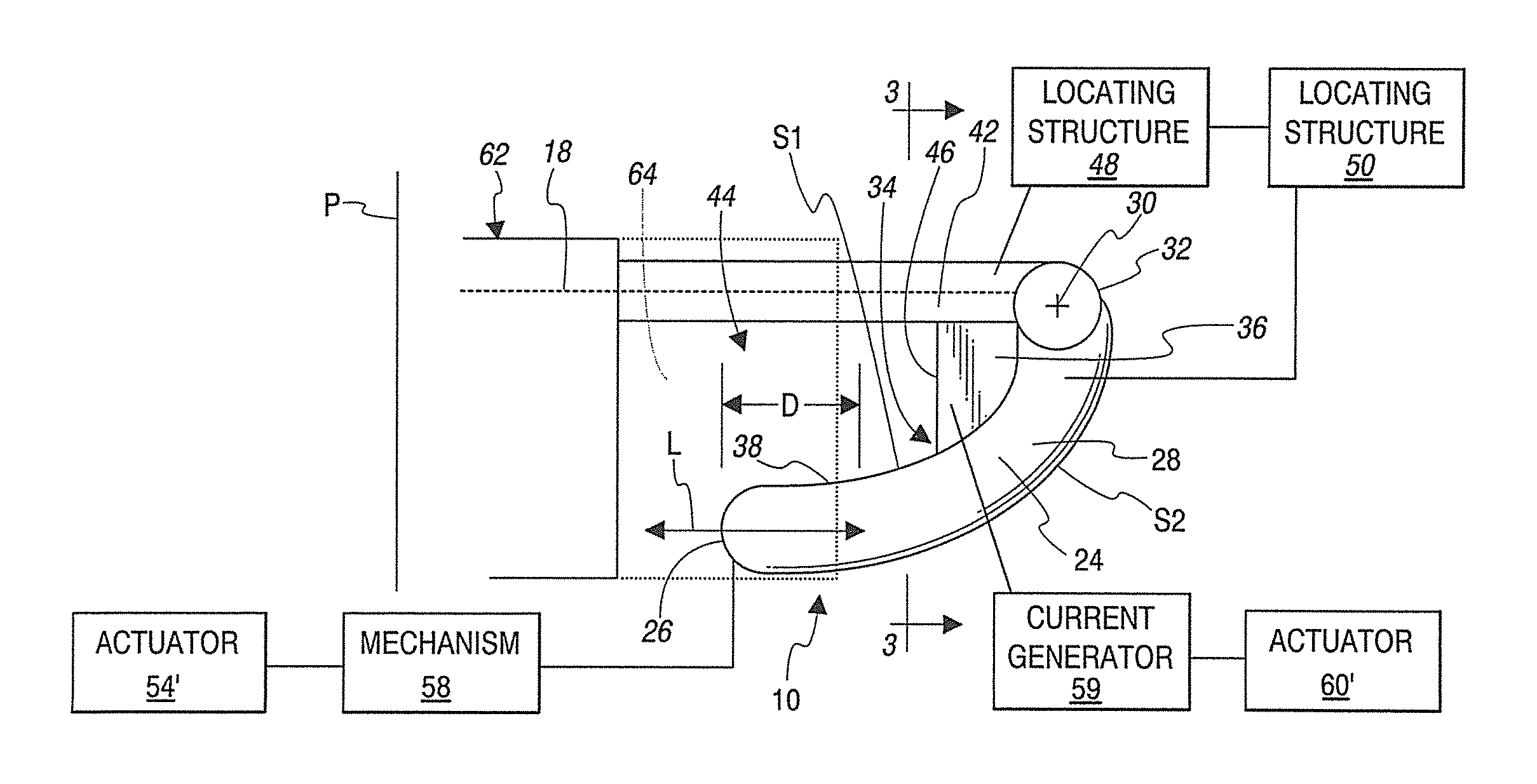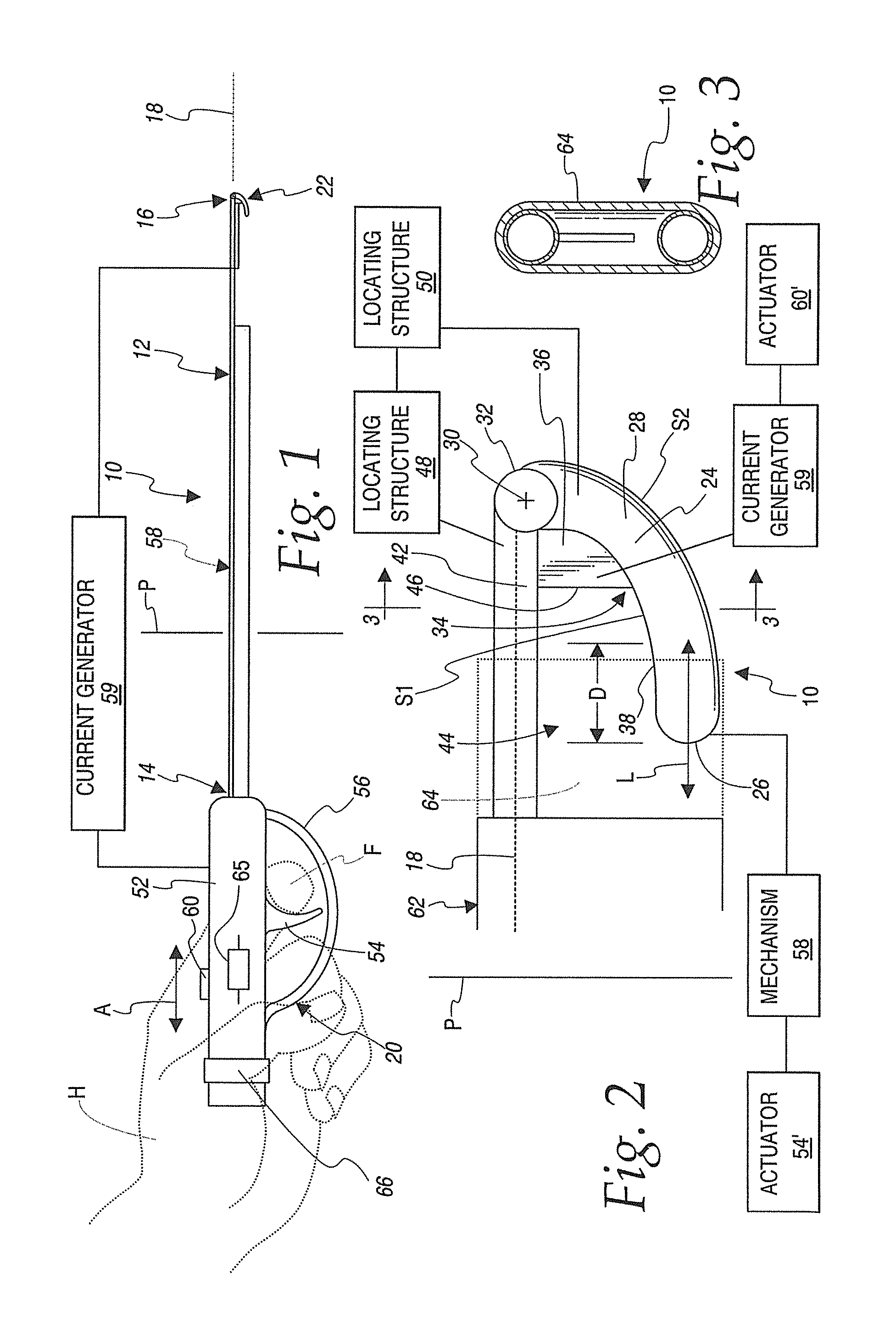Medical instrument and method of cutting a tissue using the medical instrument
a technology of medical instruments and tissue, applied in the field of medical instruments, can solve the problems of collateral damage, lengthening procedure times, and increasing the limitations of this basic instrument configuration
- Summary
- Abstract
- Description
- Claims
- Application Information
AI Technical Summary
Benefits of technology
Problems solved by technology
Method used
Image
Examples
Embodiment Construction
[0066]In FIGS. 1-11, a medical instrument, according to the present invention, is shown at 10. The medical instrument 10 consists of an elongate frame 12 with proximal and distal ends 14, 16, respectively, spaced in a lengthwise direction along a central axis 18 of the frame 12.
[0067]An operating assembly 20 is provided at a proximal region of the frame 12. A working assembly 22 is provided at a distal region of the frame 12.
[0068]The working assembly 22 consists of a cantilevered tip 24 with a free end 26. The tip 24 has a body 28. The working assembly 22 is reconfigurable by an operator through the operating assembly 20 by selectively reorienting the tip 24 relative to the frame 12. In the depicted embodiment, the tip body 28 is movable relative to the frame 12 around a fixed axis 30.
[0069]The various contemplated positions for the tip 24 can also be clearly described relative to a reference plane P that extends through the frame 12 orthogonally to the central axis 18 at a locatio...
PUM
 Login to View More
Login to View More Abstract
Description
Claims
Application Information
 Login to View More
Login to View More - R&D
- Intellectual Property
- Life Sciences
- Materials
- Tech Scout
- Unparalleled Data Quality
- Higher Quality Content
- 60% Fewer Hallucinations
Browse by: Latest US Patents, China's latest patents, Technical Efficacy Thesaurus, Application Domain, Technology Topic, Popular Technical Reports.
© 2025 PatSnap. All rights reserved.Legal|Privacy policy|Modern Slavery Act Transparency Statement|Sitemap|About US| Contact US: help@patsnap.com



